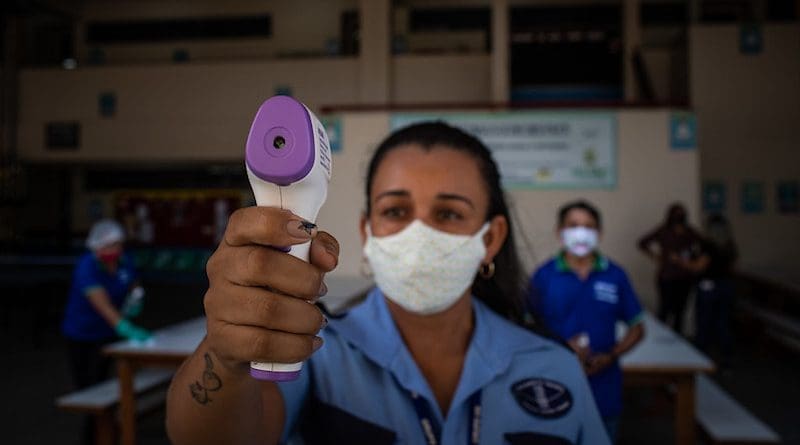Brazil City ‘Might Have Reached Herd Immunity’
In Brazil’s coronavirus-ravaged north, up to 66 per cent of people living in Manaus have contracted COVID-19, according to new research that aims to shed light on herd immunity.
Manaus, the capital of Amazonas state, has recorded about 51,000 cases of COVID-19 and more than 2,500 deaths from its population of less than two million. Many countries are yet to have recorded 50,000 cases.
The threshold for herd immunity — a “fundamental epidemiological parameter” — is the proportion of a community that has become immune to a disease, either through immunisation or natural infection. The herd immunity threshold is reached when the number of people who are capable of spreading a disease is smaller than the proportion of people who are immune.
There is no consensus on what proportion of a population must be infected with COVID-19 before herd immunity is reached, say the researchers, led by a team at the University of São Paulo.
The theoretical herd immunity threshold for SARS-CoV-2 — the virus that causes coronavirus disease — is about 60 per cent, while some scientific models predict lower values of between 20 and 43 per cent, according to the pre-print study published via medRxiv.
Global and local decisions to lift COVID-19 restrictions and the impact of vaccination campaigns may be based on estimates of this threshold, they say.
In an attempt to contain the rising number of COVID-19 infections in the state, the Amazonas government announced stricter control measures on 24 September, including the closure of bars and beaches.
After a spike in cases in March and April, there was a slow decline in numbers from May to September, the data suggests. While physical restrictions and changes in population behaviour “may have helped to limit SARS-CoV-2 transmission in Manaus, the unusually high infection rate suggests that herd immunity played a significant role in determining the size of the epidemic,” say the researchers.
Manaus could be used as a “sentinel” to determine the longevity of population immunity and frequency of reinfections, the study says.
Antibodies
The team selected blood samples that had been donated between February and August to two blood banks in São Paulo and Amazonas to identify antibodies.
“Blood samples are stored for six months, this enabled our direct measurements for the study,” says Esther Sabino, co-author of the study and a professor at the University of São Paulo’s Faculty of Medicine. Sabino coordinated the genome sequencing of the novel coronavirus in Brazil at the outset of the pandemic.
“If a person was infected in March and donated blood in August, they would not have the same amount of SARS-CoV-2 antibodies by then, because their quantity decreases over time. So, we had to adjust the rate of deterioration to calculate the actual prevalence of the virus,” she tells SciDev.Net.
“In our study, we noticed that there was no difference in the prevalence of COVID-19 in younger and older donors, so we assumed that it would be the same for the whole population.”
While Sabino’s team’s study utilised samples from blood banks, the results were similar to those of the SoroEpi MSP research project (the serial soroepidemiological survey to monitor the prevalence of SARS-CoV-2 infection in the Municipality of São Paulo), which gathered blood samples from a representative sample of the adult population.
Sabino’s team’s assumption that the herd immunity threshold was reached in Manaus “is quite plausible”, Celso Granato, SoroEpi MSP coordinator, tells SciDev.Net.
“We believe that, theoretically, herd immunity for COVID-19 would be around 60 per cent of a population resistant to the virus, and this is why this research points to herd immunity in Manaus,” says Granato, a professor of infectious diseases at the Federal University of São Paulo, who did not participate in Sabino’s study.
These findings mean that the virus will find less new victims in Manaus. But, Granato warns, “there’s still more than 30 percent of the population to infect there.”
Sabino agrees: “Transmission might have slowed down in Amazonas state, but it’s still happening.”
Sabino’s study had support from FAPESP and Wellcome, donors of SciDev.Net
*About the author: Meghie Rodrigues is a science journalist and has been a correspondent to SciDev.Net since 2017. Meghie is also a content researcher at the Museum of Tomorrow in Rio de Janeiro. She has also written for Ciência & Cultura magazine, Chemical & Engineering News, among others.
Source: This piece was produced by SciDev.Net’s Latin America & Caribbean desk.

